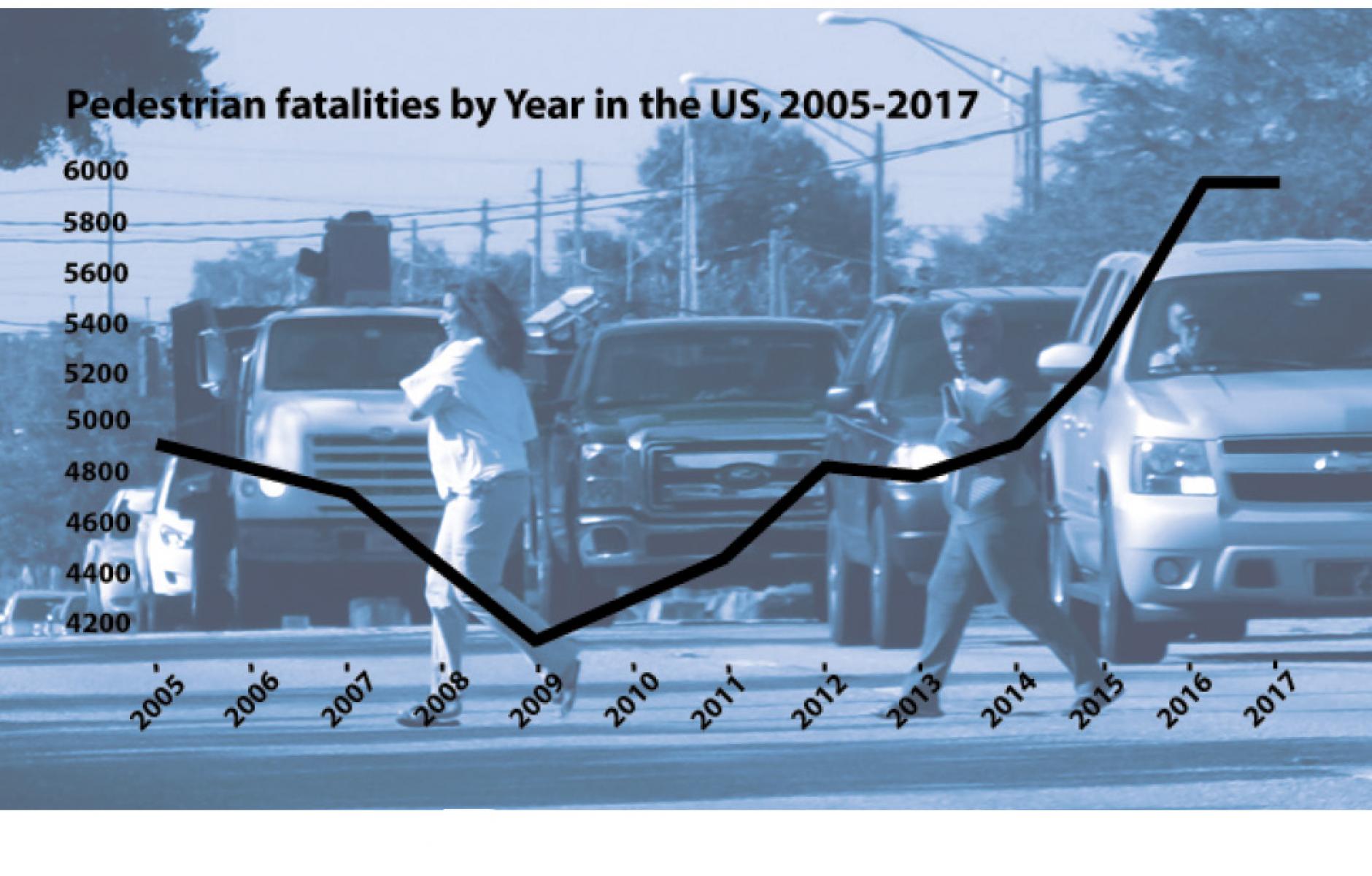
To reduce pedestrian deaths, focus on design
Pedestrian deaths have risen about 45 percent since 2009, reports the State Smart Transportation Initiative. Some experts have speculated that the cause is distracted driving, or even driving under the influence of marijuana.
While any potential causes are worth investigating, the best ongoing study of pedestrian deaths, Dangerous by Design, shows that pedestrian deaths don't happen randomly, where drivers happen to be high or distracted.
No. They occur year after year on the same automobile-oriented thoroughfares with large intersections that mix human activities with fast-moving traffic. Dangerous By Design was presented this year at the Transportation Research Board of the National Academy of Sciences.
Furthermore, the metro areas where the most pedestrians die are also those where the fewest people walk. These cities are designed in such a way to make walking very difficult. And when people do walk—out of necessity—they often are struck by automobiles with tragic result. The victims are often people who cannot afford cars or cannot, or do not wish to, drive for other reasons.
And now, automated vehicles are beginning to kill pedestrians on these same thoroughfares. To reduce pedestrian deaths, we need a strategy for taming deadly thoroughfares that go through cities and suburbs.




